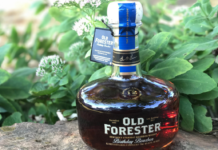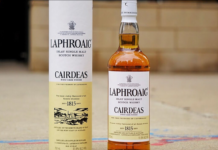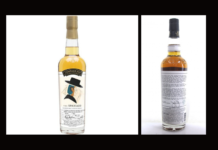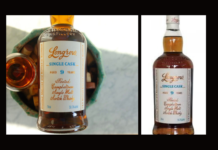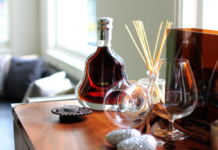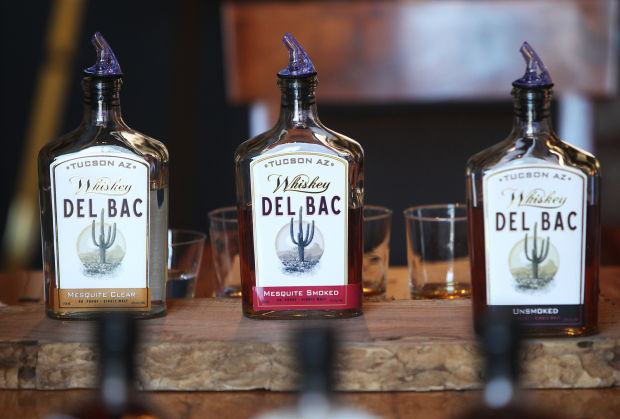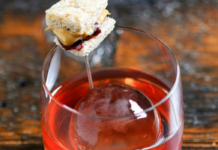Hamilton Distillers’ approach to making whiskey is just like Arroyo Design’s approach to making furniture. After years of crafting furniture that was authentic, lasting, and handmade – wood kiln dried in house, furniture assembled with mortise and tenon joints, and finished with hand applied oil and wax – there was never any question or contemplation that Hamilton’s whiskeys would be made otherwise. We do everything right in house. We malt our own barley, and we mash, ferment, distill, barrel and bottle under one roof.
After learning that so many “craft” or “artisan” American whiskeys actually come from the same mega distillery in Indiana, we are especially proud to say we do it all ourselves. It’s as real as it could ever be.
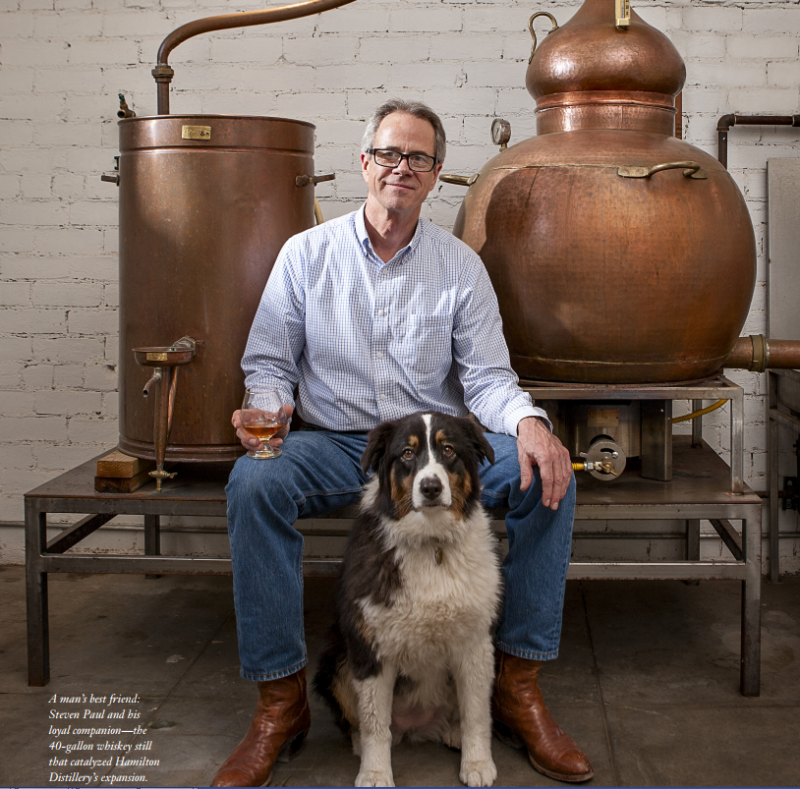 (Stephen with the 40 gallon alembic still before implementing Hamilton’s 500 gallon system)
(Stephen with the 40 gallon alembic still before implementing Hamilton’s 500 gallon system)
Stephen, can you tell us a bit about how you got started at Hamilton Distilleries?
S: My wife and I ran Arroyo Design for 30 years here in Tucson. It was a nationally-known furniture design and manufacturing company which specialized in pieces made of mesquite wood. I always used to take my mesquite scraps home to barbecue with, and I would always tell my wife “Those are our profits going up in smoke.” We’re both Scotch drinkers, and one evening in late 2006 we were barbecuing and drinking Scotch and my wife said, “Why couldn’t you dry malt over a mesquite fire instead of peat, like they do in Scotland?”
I ordered a little 5 gallon alembic still from Portugal, and started experimenting in early 2007. I was learning how to distill and how to malt, while still running Arroyo Design. In 2011, I graduated to a 40 gallon alembic still and my daughter Amanda and I got legal at that point. In 2014 we became operational on our 500 gallon system and installed our 5,000 lb batch malt house. I had finally closed Arroyo Design in 2013.
Stephen, you can almost say it was fate that brought you to this stage. Can you tell us a bit about the distillery, stills, warehousing, casks, etc.
S: Since we’re using the Scottish model of whisky-making, I just wanted a pot still, which retains more flavor than a reflux still. The still for our 500 gallon system was made by Global Stainless Systems in Portland, OR. It looks like it might have a reflux column but it is just an empty vapor chamber – no plates that would ordinarily serve for a reflux function.
We have four fermenters, and we typically do four mashes and four stripping runs and one spirit run per week. We started out aging our whiskeys in 15 gallon barrels, and we’re now in the process of phasing into 30 gallon and 53 gallon barrels. Our cooperage is The Barrel Mill in Minnesota, which I initially chose because their staves are thicker than most other cooperages, which I thought would help keep down the angel’s share in our very dry climate here in the Sonoran Desert.
As you probably know, whiskey matures more quickly in smaller barrels because of the higher ratio of wood surface to contents. The availability of small barrels has kind of turned the whole whiskey-aging paradigm on its head because of that accelerated time frame. The reason that Scotches are aged so long is 3-fold. First, the Scots are aging exclusively in used barrels. Second, they’re using large barrels, typical 53 gallons. And third, Scotland is cold. Heat is another factor that accelerates maturation, and here in Baja Arizona we are hot and dry. So what we currently have in bottles has been aged for about 11 months in 15 gallon new oak barrels. Our 30 gallon barrels are tasting fantastic at about 17 months, and our second-fill 15’s are taking about 18 months to taste really good. We do have some used Calvados 53’s that we’ve got filled, and we’re eager to see how those taste after some more time.
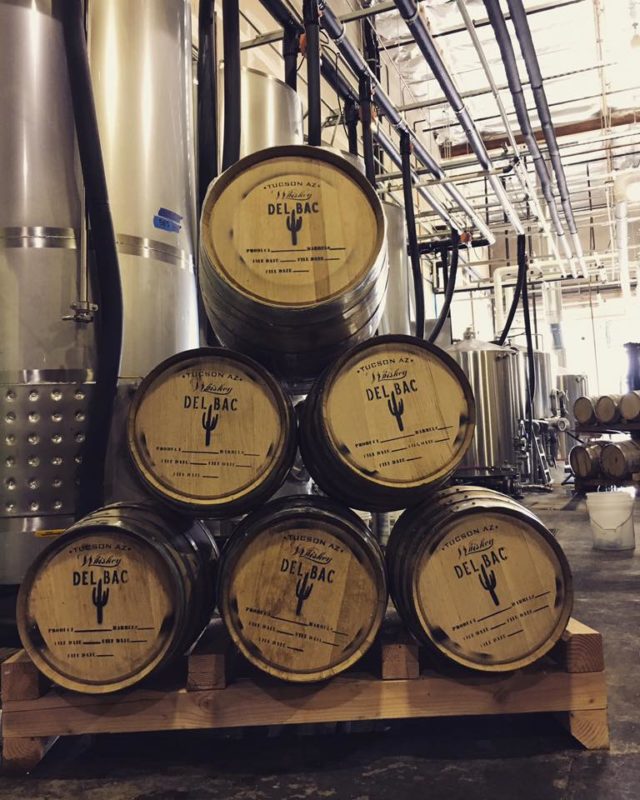 You sure do know your distillery equipment. What would you say is the single most important trait to being a master distiller?
You sure do know your distillery equipment. What would you say is the single most important trait to being a master distiller?
S: I think the most important quality in anyone who makes anything is never being satisfied with where you’re at – always striving to improve. That takes paying attention all the time and never letting up. Arroyo Design became a nationally known company because we were relentless in pursuing quality in both design and craftsmanship. We took this wild desert wood that had cracks, knots and wormholes and turned it into fine furniture that would last for generations. We actually guaranteed our product on-going, which my friends with business school backgrounds thought I was insane for doing. We installed a kiln to dry our own wood, and used mortise-and-tenon joinery, which had been replaced in the industry by dowells and “biscuits.” When I started Hamilton Distillers I took the same approach. We don’t cut corners. We don’t sacrifice quality for anything.
In your personal opinion, what is the one point in the distilling process that is most important?
S: Probably when you make your cuts. But really there are so many places you can ruin product. With us the process starts with malting, so if we’re not paying attention there we can lose quality right away. Mashing, fermenting, gauging down to proof, choosing the barrel profile for maturation. Since we’re using small barrels, we can actually leave product in the barrel too long. So even if you make your cuts at the optimal points, you can still mess things up almost anywhere.
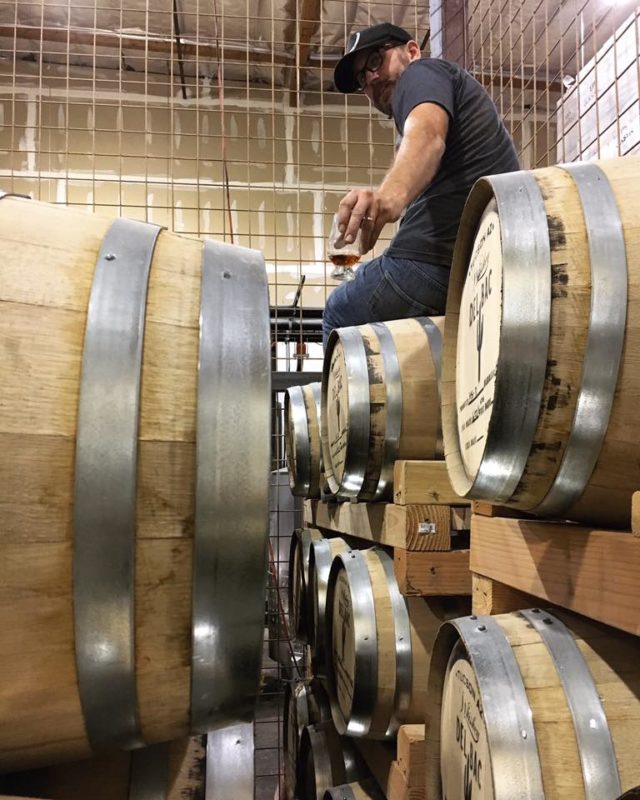 What is the most rewarding part about your job?
What is the most rewarding part about your job?
S: Hands down, it is hearing people talk about how much they love Whiskey Del Bac. We are always regaled with stories about the first time someone tasted it or how they gave it to their uncle as a gift and he fell in love with it or how they took it on a camping trip and shared it over the campfire. I’ll never tire of hearing those stories.
The Dorado whiskey is Mesquite smoked aged dram. Can you tell us about that process?
S: When we malt for the Dorado, we build a mesquite fire in a burner box outside. The heat and smoke is ducted in to our kilning tank in order to dry the malt. On our website there’s a photo of the burner box in the slide show on the Our Story page. When we malt for the unsmoked Classic, we use the heat from a boiler, running it through a heat exchanger and duct that into the tank to dry the malt.
On that topic, what are your thoughts about finishing in port wood or sherry casks?
S: We are expanding our barrel program to include finishing in used barrels. So far we just have two used Calvados barrels we’re finishing our Classic in. We’re lining up some sherry casks to fill. We’re also refilling our own Del Bac barrels, which serves the same purpose as Scotch distilleries refilling used Bourbon barrels.
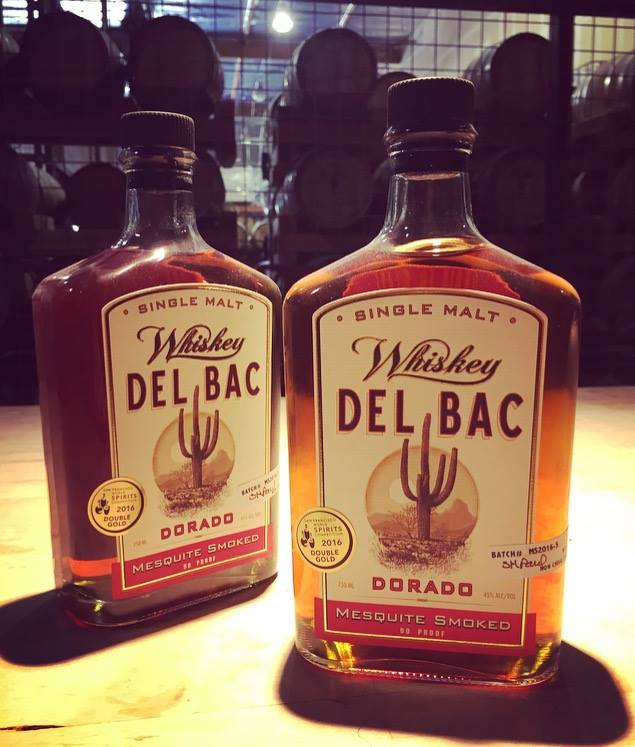 Stephen, do you remember your first dram?
Stephen, do you remember your first dram?
S: My first dram was actually a glass of Dewars, which my wife introduced me to early in our marriage. I drank Dewars for a long time before realizing there was a whole world out there that needed to be explored.
What is your favorite dram at the moment? Do you drink it neat or on the rocks?
S: The Balvenie 12 yr Doublewood is my go-to Scotch when I’m out to dinner at a place that doesn’t have Whiskey Del Bac. Its a great whisky at a good price. I usually drink it neat, although at times I’ll ask for a single ice cube.
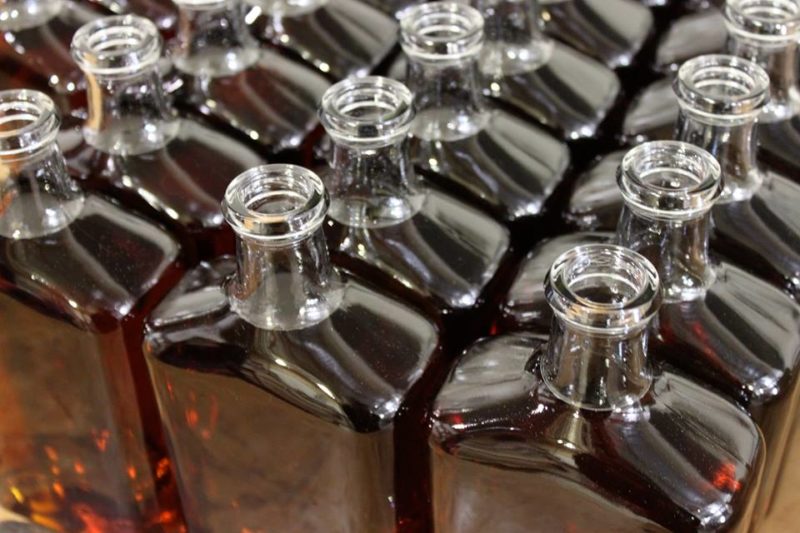 Is now the most exciting time for whiskey lovers?
Is now the most exciting time for whiskey lovers?
S: It is a phenomenal time for whiskey lovers. There is so much awareness and appreciation for the range of whiskey experiences. Bloggers are big part of that. The innovation going on now in American whiskeys is incredible. From Matt Hoffman at Westland digging up Washington State peat and having malt dried over that to a Tucson distillery malting over mesquite to all the things the Corsair guys are doing with different grains and smoke, the level of adventuresome distilling is truly awesome.
Is there anything else you would like to share wit the Tastethedram readers?
S: I initially did floor malting in little 70 lb batches. Our tank-based system is a prototype that we developed to save floor space and achieve more control over the malting process.
Also, the formation of the American Single-Malt Whiskey Commission will be big for us single-malt producers. Formation was spearheaded by Matt Hoffman at Westland, and the goal is to not only get the TTB to recognize a category for American single malt whiskeys, but also to elevate the public’s awareness of American single malts. The Commission has a website you can check out. We’re an emerging category, and I think there are 22 of us who’ve signed on as Commission members.





